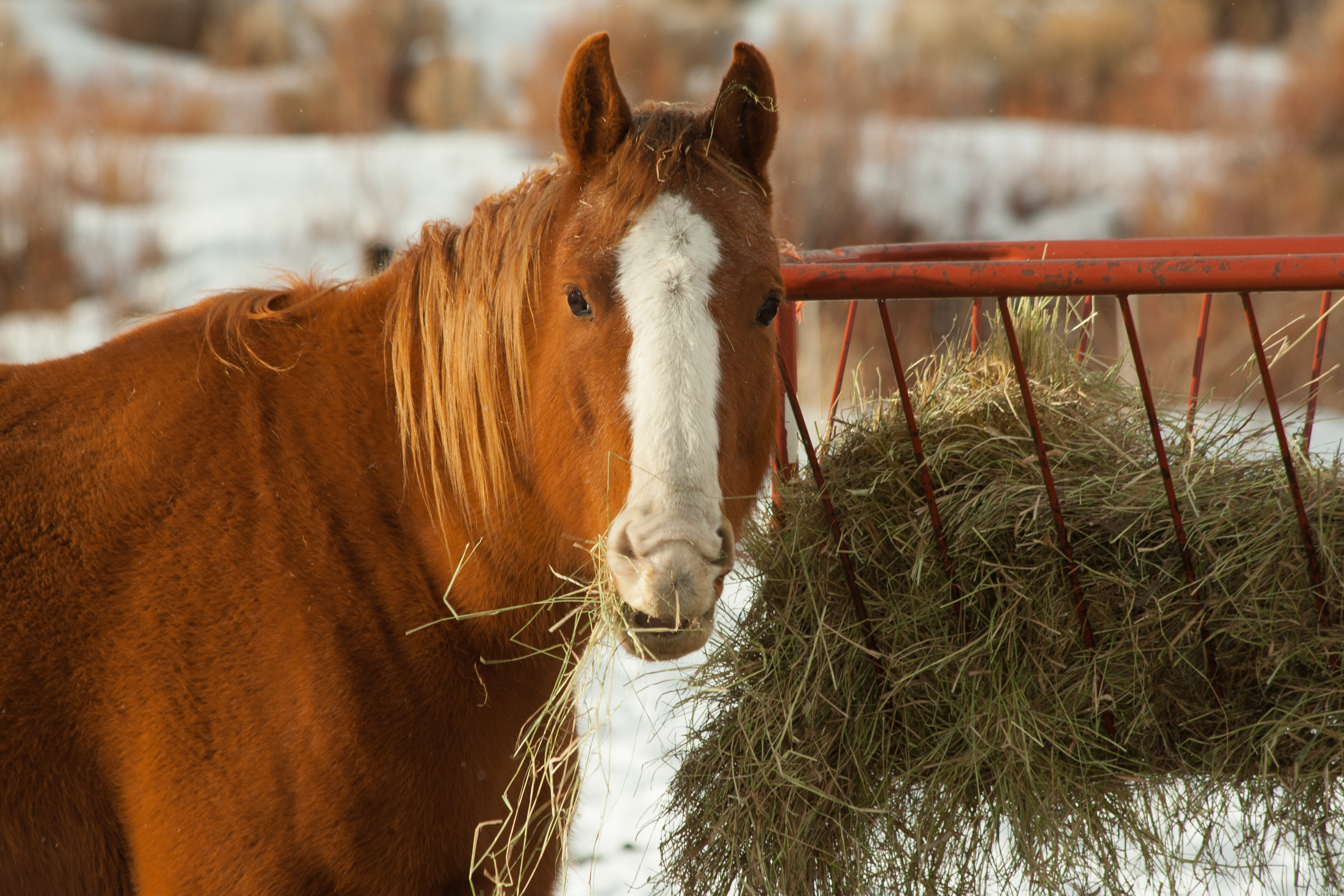Home > Horse Care > How’s your hay supply holding up?
How’s your hay supply holding up?
- January 10, 2024
- ⎯ Christine Barakat with Melinda Freckleton, DVM
January is a good month to check your hay supply to make sure you have enough to last the rest of the winter. Take stock of how many bales remain in your loft or shed and do some quick calculations based on how many flakes you are feeding daily.

If it looks as if you may run out of hay before spring pastures grow in, now is the time to take action. The easiest solution is to purchase more, if it’s available. If good-quality hay is hard to find this late in the season, you may have to make some judgment calls. Hay that is a bit bleached or stemmy may be less nutritious but is fine to feed as a source of fiber. On the other hand, avoid buying moldy or dusty hay, no matter how scarce supplies may be.
Click here to learn more about ration balancers.
If purchasing bales isn’t an option, consider alternate roughage sources. Chopped hay, complete feeds, soaked beet pulp, or alfalfa cubes or pellets are all good options. But don’t wait until your hay runs out to make the switch—that can set your horse up for colic or other metabolic disturbances. Change your fiber sources as you would concentrates or other processed feeds—very gradually. Mix the old and new 50/50 for one week before switching over to the new source entirely. Then make a mental note to adjust next fall’s hay order so you won’t find yourself scrambling next year.
This article first appeared in EQUUS issue #461
Don’t miss out! With the free weekly EQUUS newsletter, you’ll get the latest horse health information delivered right to your in basket! If you’re not already receiving the EQUUS newsletter, click here to sign up. It’s *free*!





